Blog
Articles on Product Analytics, Event data, Metric Trees, and operational insights.
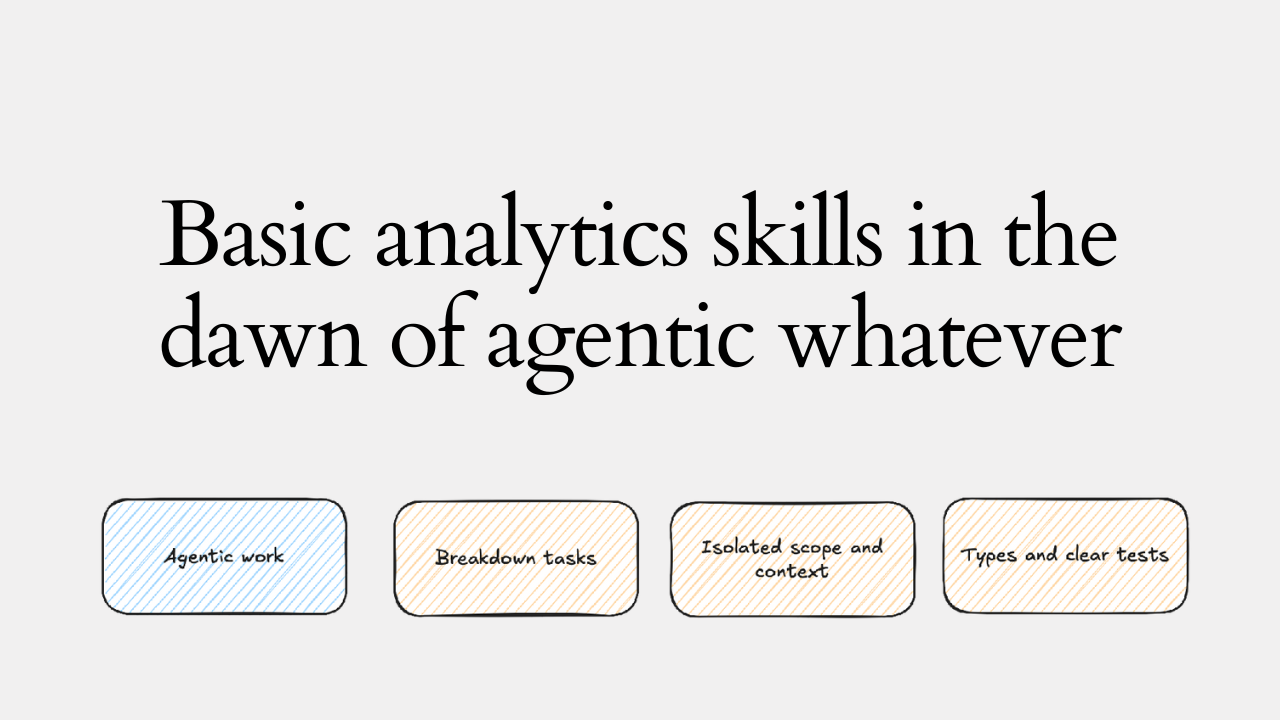
Basic analytics skills in the dawn of agentic whatever
On my YouTube channel, the video "How I would start as a Data Consultant - if I could press Restart" is the most watched video with over 7,000 views (which is a lot for my channel). I have published it in October 2022. So 3 years ago. It does not mention AI in any way, because it did not matter then. But it does now. Time for an update. Even when it is a bit more meta than the first one. A lot of people trying to predict how AI will change data work. Will analysts disappear? Will data engineers
Pragmatic Orthodoxy - Data Signals #1 - 03.11.25
Hello, welcome to a new bi-weekly format of this newsletter. I am thinking about it a while already, how I can share interesting content I come across. It shouldn't be just a next, here is a list of great articles I read, type of post. These are great, but there are already plenty of them. So, I developed this signal format. The basic idea is that I highlight interesting ideas and thoughts I come across when reading a post. Then spend some time with an AI model to riff and brainstorm over thes

dbt blues
When dbt Labs announced their merger with Fivetran, the data community had feelings. A lot of them. The dbt fear index—Oliver from Lightdash's brilliant term for the spike in repository forks—told the story better than any LinkedIn post could. 🚨 The dbt Fear Index just spiked 🚨 The number of of dbt forks are going crazy on rumors of a Fivetran acquisition and the timing couldn't be more wild with Coalesce right around the corner. In… | Oliver Laslett | 59 comments🚨 The dbt Fear Index jus

The End of Digital Analytics
as we know it. When Amplitude announced their new chief evangelist some days ago, most people saw a standard hire - congratulations comments galore. I saw something different: a clear signal that digital analytics as we know it is fundamentally over. This wasn't just any hire. They brought in someone who embodied everything that Google Analytics 4 represented—the old marketing analytics world that digital analytics had been built around for two decades. It's like watching a species evolve in r
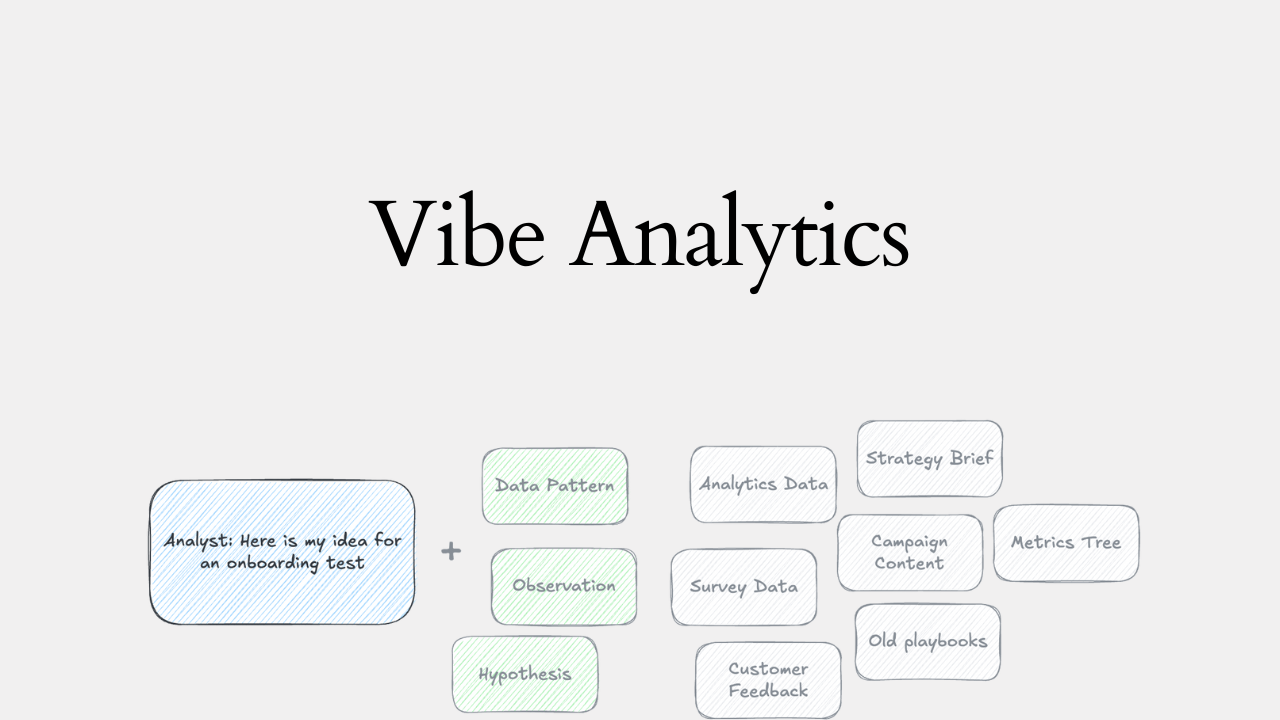
Vibe Analytics: When Everyone Becomes an Analyst (And Analysts Become Everything Else)
1. Introduction: The Vibe Shift So, vibe coding is a thing. I won't spend this post arguing why vibe coding is a thing, because that's not really the purpose here. To be honest, the whole thing is in a weird space right now. On one hand, you see the super enthusiastic people posting about how they built a million-dollar app over a weekend. Definitely not true. But on the other hand, you see very experienced developers pointing out how this whole thing cannot really work. And then in the middle,

The Double Three-Layer Framework for Tracking Setups
It all started on a drizzly Tuesday, somewhere between the flat-pack sofas and the cafeteria (vegan) meatballs. You just landed a fresh analyst role at IKEA, and your first orders were simple on paper: figure out how shoppers use the in-store screens. Sounds clear, right? But here’s the thing—“use” lives on several floors of the same house. Swipe to scroll? Tap to check stock? Stand there day-dreaming in front of the rug-chooser? Each layer tells a different story. Step 1 — Spot the many flavo

The dark side of growth metrics
This will help you to understand why your CFO doesn’t like your growth rate. Metrics by themselves aren't easy. They have these different levels that make them surprisingly complicated. On the surface, metrics look straightforward - you've probably seen those LinkedIn posts promising "the ultimate list of 200 SaaS metrics" where you just pick what works for you and build your KPI dashboard. The tricky part comes when you dig deeper. Actually applying and using metrics creates real frustration

Product Analytics in a feature factory
There were some heated discussions in the product world some months ago when two product realities clashed significantly. On the one hand, you have the ideal picture of product management: a bunch of really smart people who take a lot of care in product discovery and research (Lenny's podcast with Marty was a good example covering this: https://www.lennysnewsletter.com/p/product-management-theater-marty). They excel at prioritizing different initiatives based on their findings. Then, they test
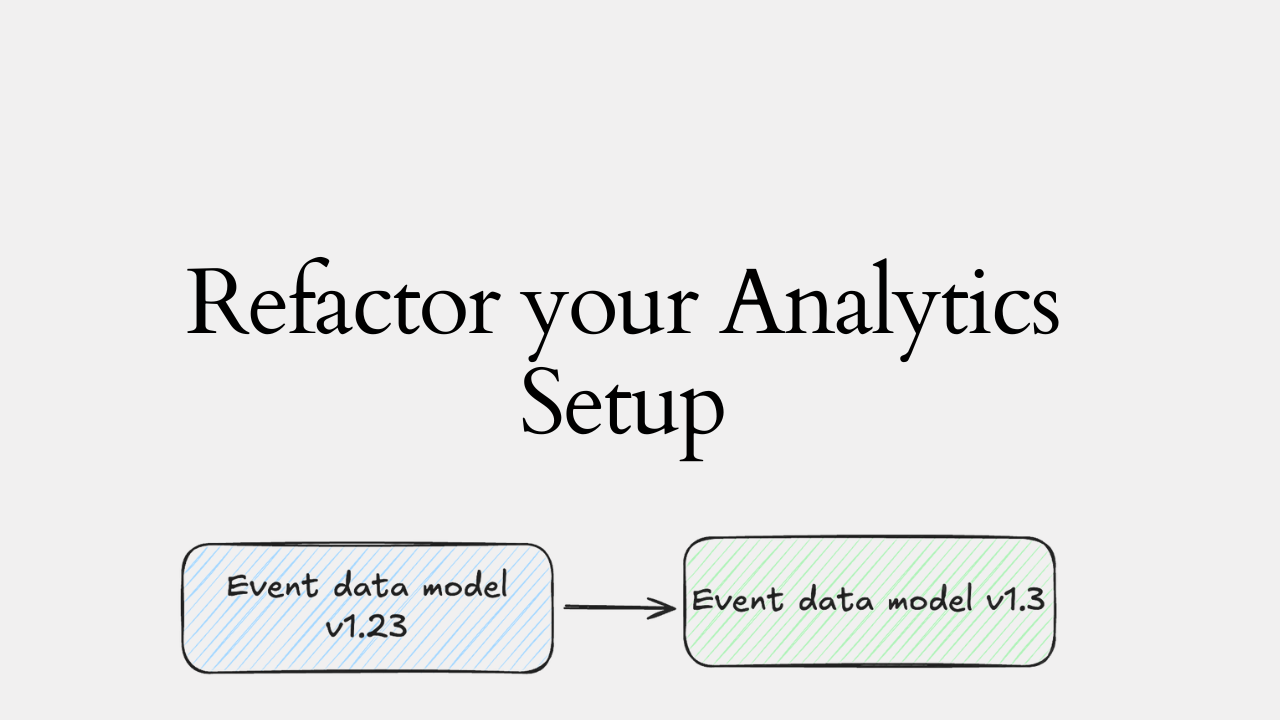
How to refactor your tracking design?
Imagine the not-so-unlikely situation of starting a new job as an analyst, where behavioral data analysis (aka marketing & product analytics) is essential. This involves tracking activities on the marketing website and within the product, and numerous questions quickly arise. People want to understand aspects like the onboarding process and the effectiveness of recently released features. As a new employee, you're highly motivated. However, when you begin to investigate the data, you discover i
European Analytics
No worries. This will not become any kind of polarized post. But if you want to go and pick your analytics and any kind of data software providers not from the US and you really want to go for European options, here is a collection of option but also a good reminder what would be missing. Obviously, if you've followed all the Google Analytics alternative discussions, where your data is saved definitely has an impact. The data storage is already something today you need to take into account. Now
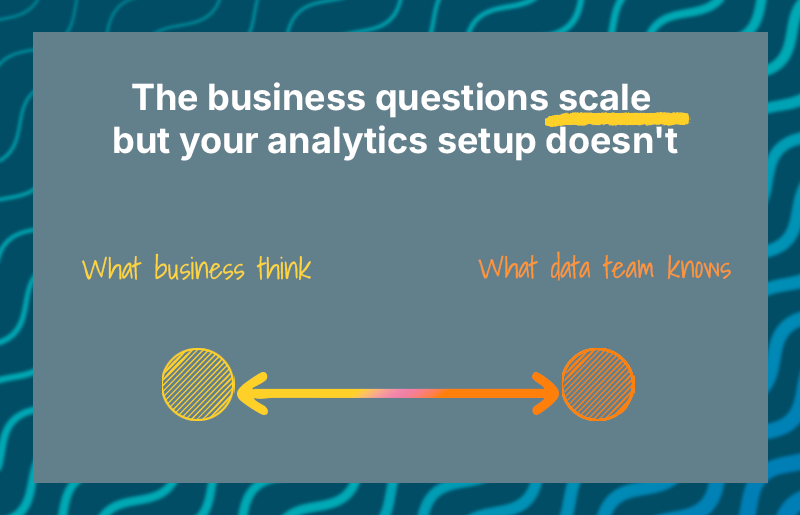
The business questions scale, but your analytics setup doesn't
When implementing data analytics, there's this tricky inflection point that often catches everyone by surprise. It's that moment when your initial dashboards finally deliver value, people start using them regularly, and then - inevitably - the follow-up questions start rolling in. How Data Projects Usually Get Started Let's say we start in a very simplified way. First step would be when you have some experience you establish a metric system or build a metric tree. This will cover 10 to 20 cor
Metric Trees for Digital Analysts
Content in digital analytics tends to be pretty predictable. Juliana pointed this out a while ago - most content in our field focuses on implementation, rarely touching on actual data analysis or how to work with data meaningfully. I see similar patterns. If you look at what people publish or check out talks at typical conferences, it's heavily weighted toward implementation topics and technical hacks. These days, you'll see tons of content about working with GA4 data in BigQuery - it's the hot
Measuring Product Evolution Through Core Features - Miro Analytics Setup
Imagine spending months meticulously tracking every feature of your product, collecting data on every user interaction, only to realize you're missing something crucial: how your core product is transforming. When a product grows by adding new features - like Asana adding goals or Slack adding huddles - measuring success is relatively straightforward. But what happens when your product evolves by transforming its core offering? This is where traditional analytics often falls short. Using Miro a

Measure your product strategy - a new learning for analytics setups
An interesting discovery I decided to take on an interesting challenge: creating one tracking plan every day for a week, with plans to continue for three more weeks. The goal was to create 20 tracking plans for common startup tools. I chose these tools because people are generally familiar with them, and they cover different product directions. This means if your product overlaps with any of these tools (like Notion), you can find useful inspiration. One of my biggest worries was that it would
Measuring AI productivity features - Analytics setup for Loom
Imagine spending months perfecting your product's analytics, meticulously tracking every user action, only to have AI features completely upend your measurement strategy. That's the challenge many product teams face today. When Loom added AI-generated titles, summaries, and chapters to their video platform, they didn't just add new features - they fundamentally changed how users interact with their product. How do you measure the success of actions that no longer happen? How do you track produc
Designing Analytics for Creative Tools: Finding Clarity in Complex User Journeys - Canva Tracking Plan
Creating analytics for creative tools like Canva seems like a paradox at first. How do you measure success in a process that's inherently iterative, personal, and often non-linear? When every color change, text adjustment, or element placement could be tracked, how do you avoid drowning in data while still capturing what truly matters? As someone who has implemented analytics for various products, I faced this exact challenge when approaching Canva's tracking plan. The solution wasn't in tracki
Combining your Product Strategy with your Analytics Implementation - Tracking Plan for Asana
Analytics can feel deceptively simple when you start with a product like Asana. Track some tasks, measure completion rates, count active users - done, right? But as your product evolves beyond its core features, your analytics need to evolve too. The real challenge isn't tracking basic metrics; it's building an analytics framework that captures both your product's essential heartbeat and its strategic evolution. While simple task management metrics might tell you if users are active, they won't
Create a tracking plan for a tool that you want to use as short as possible - Vimcal tracking plan
You've probably been there: staring at your analytics dashboard, drowning in a sea of click events, page views, and user actions, yet somehow still unable to answer the simple question "are people actually using our product?" It's a common trap in product analytics - tracking everything but understanding nothing. This was exactly where I found myself years ago, watching teams build elaborate tracking plans that collected every possible interaction but failed to tell the product's story. Today,
Build a tracking plan around one core feature - Inbox Zero in Superhuman
In this content series - season 1, I create a tracking plan for a typical start-up tool every day for four weeks (I take a break on the weekend), so 20 in total. This is the second one: Superhuman. Here is the season overview: Imagine spending months meticulously tracking every click, scroll, and interaction in your product, only to realize you've missed the one metric that truly matters. This is exactly what happens when teams build tracking plans without anchoring them to their product's core
Making Smart Tradeoffs in Analytics: A Slack Tracking Plan Journey
In this content series - season 1, I create a tracking plan for a typical start-up tool every day for four weeks (I take a break on the weekend), so 20 in total. This is the second one: Slack. Here is the season overview: Every click, every interaction, every moment of user engagement whispers a story. But what happens when those whispers become a deafening roar of data? Most teams believe that more tracking means more insights. The truth is brutally simple: tracking everything often means unde
Building Notion's Analytics Foundation: A Product-First Tracking Plan
In this content series - season 1, I create a tracking plan for a typical start-up tool every day for four weeks (I take a break on the weekend), so 20 in total. This is the first one for the omnipresent Notion tool. You can apply the principles in this one to any tool that has workspaces and documents. Here is the season overview: Every product analytics implementation starts with good intentions and ends in event chaos." This was my experience at every company until I developed a structured a
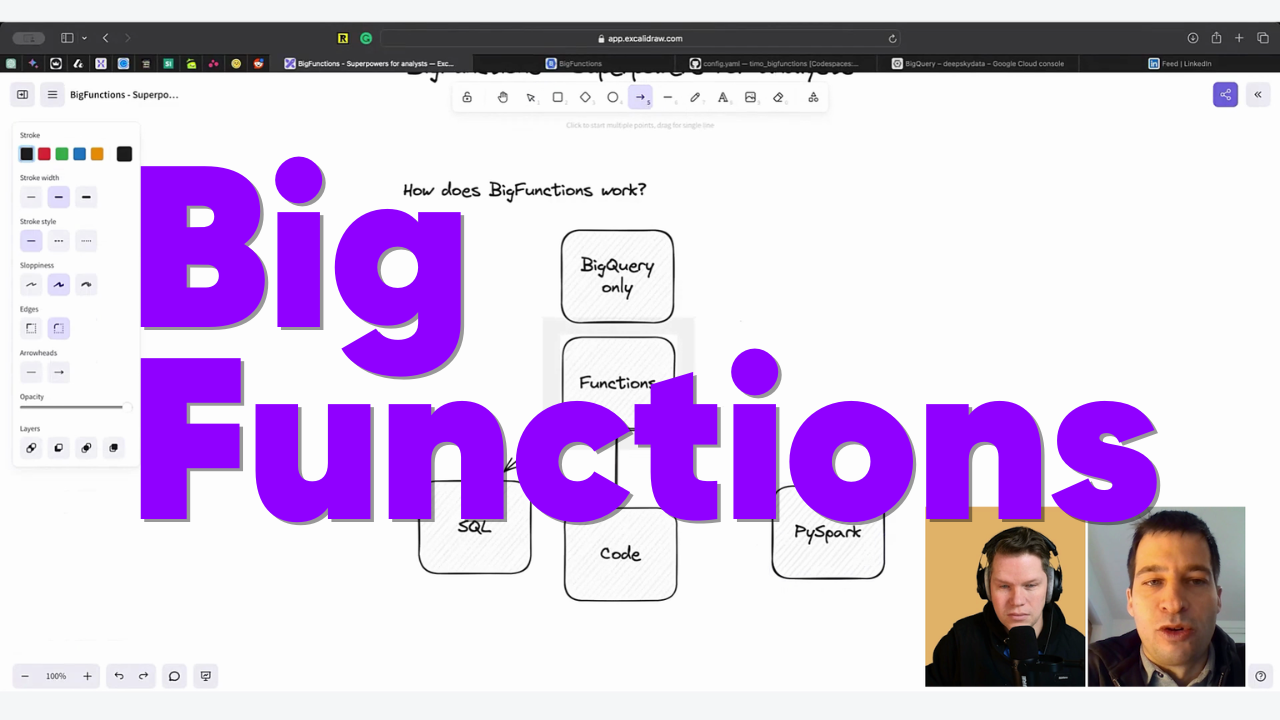
From SQL to Slack: Automating Data Workflows with Big Functions
Every data analyst knows the feeling: you've uncovered an important insight, but turning that finding into action requires an engineering ticket, multiple meetings, and weeks of waiting. What if you could write a SQL query and have it automatically notify your team on Slack? Or enrich your customer data with third-party information without building a complex pipeline? BigFunctions transforms BigQuery from a data warehouse into an automation engine, letting analysts trigger actions directly from
How I reconfigure atm
Reconfigured is a tool I've been using for almost three months now. It helps me capture everything I encounter when working on data tasks. One unique aspect of data work is how often you discover quite a lot of bits of information that become extremely relevant later. These insights come in different forms. While some are specific discoveries from analysis, I find most are a mix of decisions, questions, and tasks. For example, when working on a data model and implementing specific logic, I ma
The easiest tracking setup in the world
Wait is this about the AI tracking solution - NO, it is not... keep reading
Sessions v Users
We really need to talk about this one

The next evolution of Product Analytics
about product performance

Introducing user states in product analytics
The simplest model to measure your product performance
Combine Product analytics with Subscription data - Part 2
Adding Dashboard Trees and behavioral analysis
Combine Product analytics with Subscription data - Part 1
Bring all events into one place for deep analysis
How to measure a data platform?
Product analytics for data products

Eventify everything - Data modeling for event data
An introduction
Everyone is a CDP now
but what does that even mean?

Data pipeline orchestrators - the emerging force in the MDS?
The one who controls the flow controls everything

About Data User Experience
Maybe we have ignored this for too long

Quo vadis, Data Open source
A case study and review based on the examples of Snowplow, dbt, Rudderstack, and Iceberg
After the Modern Data Stack: Welcome back, Data platforms
And no, there is no one way to what is next, we have 1000+ of ways.
Use feature analytics for better products
We are not building something for the fun here
What is beyond event data?
When Data Events are iron, Activities are your steel-building parts.
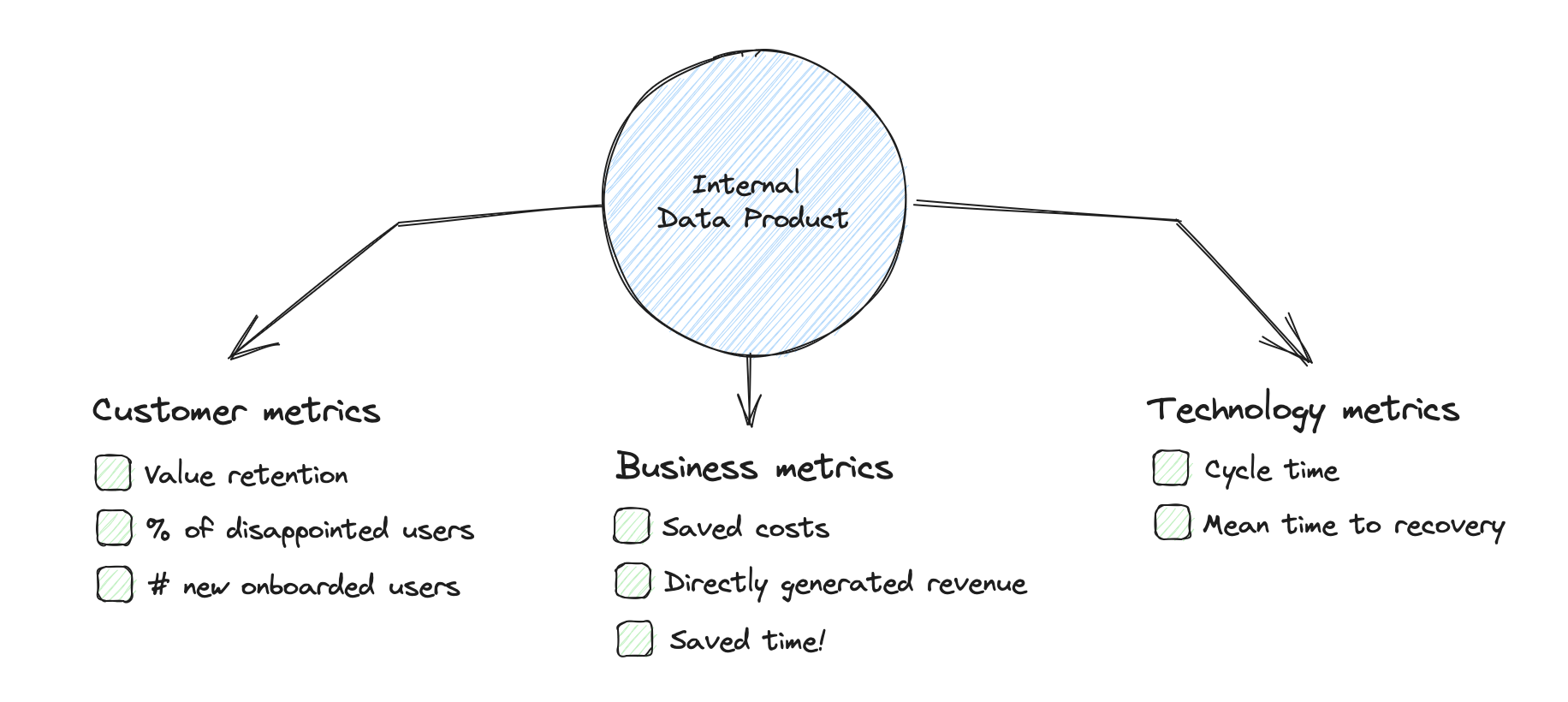
The Go-To Metrics for Data Products: Start with These Few
We are talking about data products, so of course we should speak about metrics

Leaving product analytics
an analysis of the current state of product analytics and beyond

The extensive guide for Server-Side Tracking
Take control where you create your event data

Ways to solve the data user identity & privacy crisis
Why we should think beyond using user ids for everything

Here is your stack of salt for reading or watching data content
You will need more than just a few grains

Tracking/Measurement/Collection/Creation - what was the question again?
Trying to define something that needs definition but has a history that can't be changed easily.
Retention Analytics - the definitive guide
There just one thing to learn in product analytics - unfortunately it takes a bit

Why product analytics is completely different than BI
When explorers meet structured formats
More than 30 unique tracking events will cause you problems
The easiest way to increase data adoption, productivity and decrease quality problems

The data’s trojan horse
There is a way to talk to other business teams

Sometimes, you need to say: screw it
Or: The return of the hipster data stack
Using EventStorming when building internal data products
why data teams need to become the domain experts of all domains in a company
Why not try a simple data stack
When the modern data stack looks cool but is far too early
Coming soon
This is Hipster Data Lab, a newsletter about When no one asks anymore if the data is correct. Subscribe now